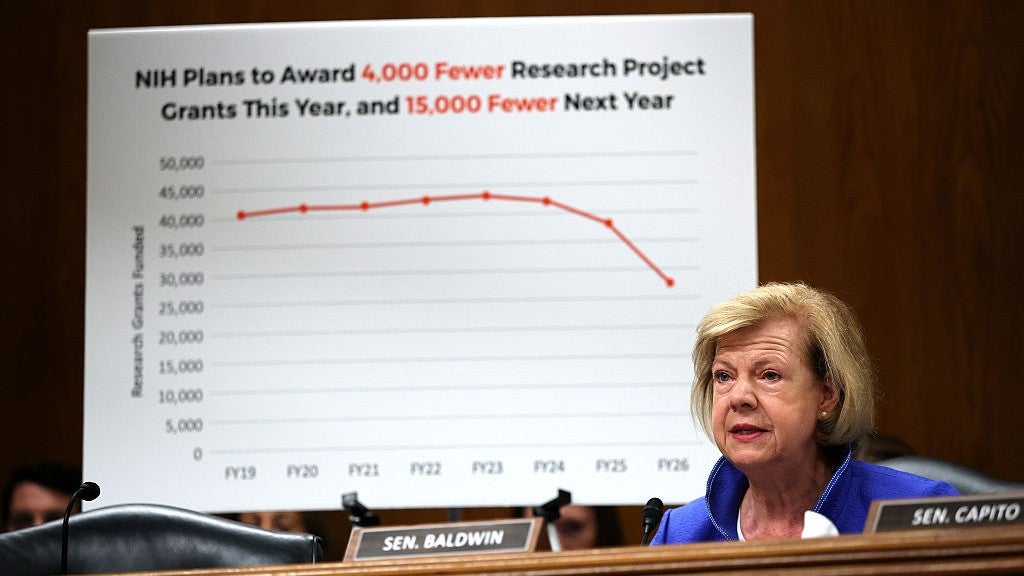The United States continues to attract global investment due to its vast consumer base, strong startup funding ecosystem, and strategic advantages in trade. For decades, it has also led the world in research and development (R&D), particularly in foundational scientific inquiry. However, proposed reductions in federal R&D funding, tighter immigration rules, and political interference in scientific fields threaten to erode this leadership over time.
Barry Broome, head of the Greater Sacramento Economic Council, identified research funding cuts as the most concerning disruption among recent policy shifts, including tariffs and government shutdowns. He described these reductions as “silent economic killers,” with consequences likely to emerge years later.
Federal agencies have historically funded around 40% of basic research—scientific exploration without immediate commercial goals. Innovations such as the internet, GPS, artificial intelligence, and smartphones originated from such federally supported projects.
In 2024, nearly half of federal basic research funding went to the Department of Health and Human Services (HHS), primarily through the National Institutes of Health (NIH). The National Science Foundation (NSF) ranked second, supporting science, technology, engineering, and mathematics (STEM) initiatives. However, in 2025, both agencies face uncertainty as proposed budget cuts have halted ongoing studies and delayed new grants. The Trump administration has suggested slashing NSF funding by over 50% and NIH funding by 40%.
The White House justified these moves by claiming certain programs wasted taxpayer money on initiatives related to diversity, equity, and inclusion (DEI). Yet the impact extends far beyond DEI-related projects, with broad concern across academia that full implementation could weaken the nation’s innovation infrastructure. Universities are also under financial pressure due to declining enrollment of international students, who typically pay higher tuition.
Steven Schuchart, principal analyst at GlobalData, warned that moving research abroad could lead to breakthroughs occurring outside the U.S., accompanied by a loss of top scientific talent. He noted that both foreign and American students may choose institutions elsewhere if domestic funding dries up.
As of late 2025, more than 3,800 NIH and NSF grants have been canceled or frozen, according to watchdog group GrantWatch. A White House justification referenced a 2024 report by Senator Ted Cruz alleging that the NSF spent over $2 billion on projects promoting “neo-Marxist” ideas or DEI principles during the Biden administration. The methodology relied on keyword filtering, including terms like “climate change,” “female,” “ESG,” and “socially relevant.”
While DEI-focused STEM outreach did expand under Biden, the characterization of such research as ideologically driven remains debated. Some canceled projects involved improving autonomous vehicle safety, synthesizing new pharmaceuticals, and studying protein malfunctions linked to cancer.
By May 2025, the largest share of canceled NSF funds came from STEM education programs ($656 million), though declines in new grants affected math, physics, and chemistry most severely, with $289 million in funding denied. Over one-third of terminated NSF grants appeared in Cruz’s report.
The NIH has also suffered major setbacks. A recent analysis found disruptions to hundreds of clinical trials involving over 74,000 patients due to grant cancellations. GrantWatch estimates the financial impact at $2.3 billion in lost NIH funding.
Although the administration claims to prioritize areas like AI, biotechnology, national security, nuclear energy, quantum science, and space exploration, even these domains have seen funding interruptions. For example, a Miami-based AI institute focused on weather prediction lost $20 million in NSF support in September.
A reduction in public funding for basic research is especially damaging because private companies typically avoid long-term, non-commercial projects. Without federal backing, such foundational work may not occur at all within the U.S.
Economic studies suggest non-defense government R&D has contributed 20–25% to private-sector productivity growth since World War II. Simon Atkinson, vice-chancellor of research at UC Davis, emphasized that breakthroughs like quantum computing trace back to fundamental research funded decades ago—work only possible with federal investment.
When asked for comment and details on grant selection criteria, the NSF declined to respond. The NIH issued a statement affirming its commitment to evidence-based science and prioritizing research addressing chronic diseases: “NIH is committed to restoring the agency to its tradition of upholding gold-standard, evidence-based science, and is carefully reviewing all grants to assure the agency is addressing the United States chronic disease epidemic. NIH and HHS are taking actions to prioritise research that directly affects the health of Americans. We will leave no stone unturned in identifying the root cause of the chronic disease epidemic as part of our mission to make America Healthy Again.”
Universities are also grappling with fewer international students. This year, new enrollments dropped by 17%, attributed to visa complications and stricter screening, including a June 2025 requirement for applicants to disclose social media activity for signs of hostility toward U.S. institutions.
Current students are also affected, with fewer pathways to remain post-graduation. The H-1B visa, once a common route for skilled researchers, faces uncertainty due to a proposed $100,000 fee. Optional Practical Training (OPT), which allows graduates to work for one or two years, is also under scrutiny.
Atkinson warned that these combined pressures are causing students to reconsider research careers, which could have lasting consequences for U.S. scientific leadership.
Lawmakers have until January 2026 to finalize budgets for research agencies. Failure to agree could trigger another government shutdown. There is bipartisan resistance to the sweeping cuts, with Senate committees expressing opposition this summer.
While Republicans may hesitate to publicly challenge the president, Atkinson noted private acknowledgment of research’s importance, particularly regarding national security.
Schuchart stressed that the situation remains reversible if action is taken swiftly. Prolonged underfunding, however, could permanently impair U.S. competitiveness in technology.
— news from Clinical Trials Arena
